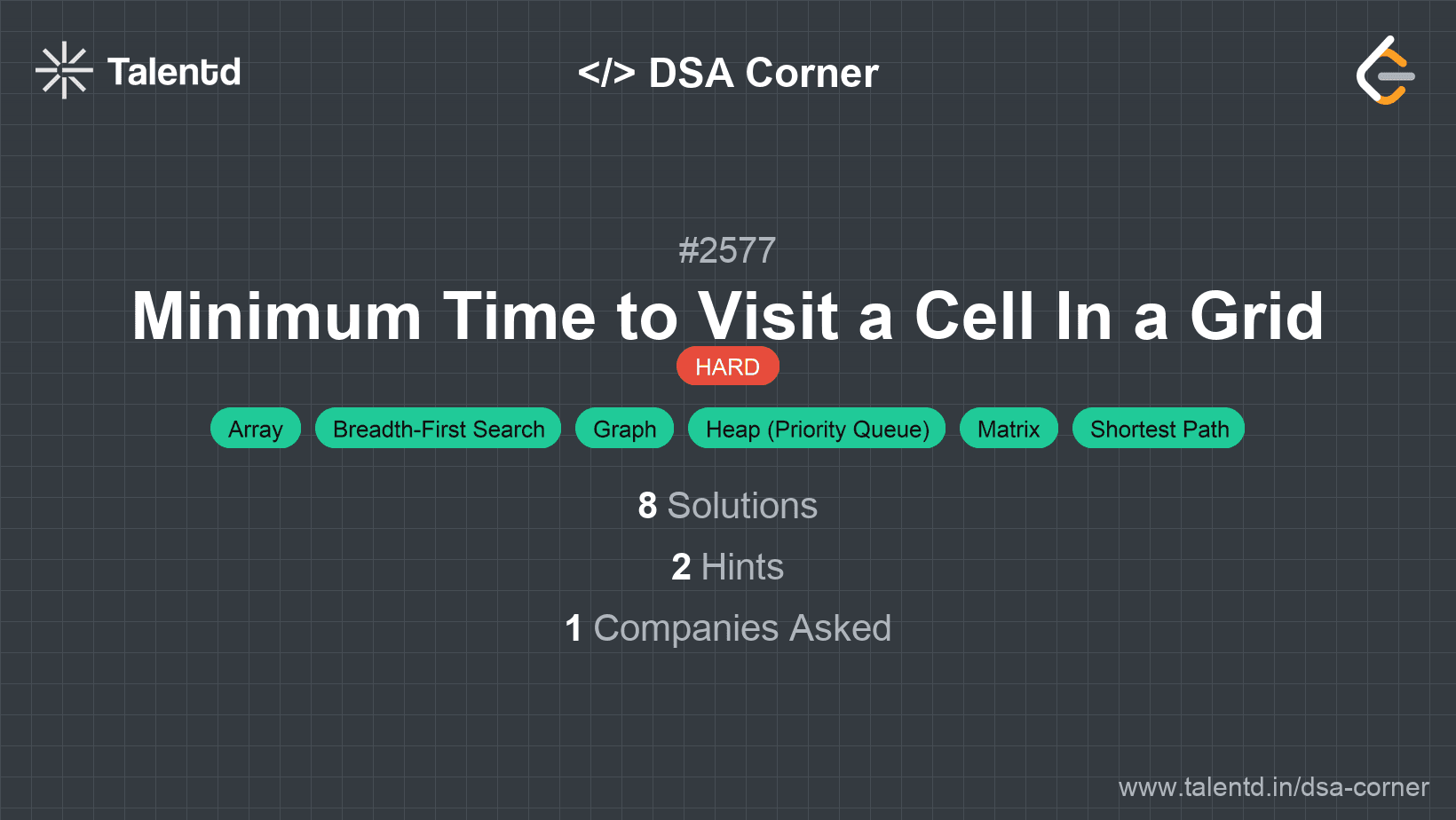
Sponsored
Sponsored
This approach uses a priority queue to implement a modified version of Dijkstra's algorithm. The challenge here includes managing both the time constraints specified by the grid and the movement cost. The goal is to find the shortest path in terms of time while making sure each cell is entered at a valid time.
We use a priority queue to determine which cell to visit next based on the minimum time it takes to safely visit it. This is similar to choosing the shortest weighted edge in Dijkstra's algorithm, but our 'weight' here is the time passed.
Time Complexity: O(m*n*log(m*n)) due to heap operations for each cell.
Space Complexity: O(m*n) to store the visited set.
1import heapq
2
3def minimum_time(grid):
4 m, n = len(grid), len(grid[0])
5 pq = [(0, 0, 0)] # (time, row, col)
6 visited = set()
7 directions = [(1, 0), (-1, 0), (0, 1), (0, -1)]
8
9 while pq:
10 t, r, c = heapq.heappop(pq)
11 if (r, c) == (m - 1, n - 1):
12 return t
13 if (r, c) in visited:
14 continue
15 visited.add((r, c))
16
17 for dr, dc in directions:
18 new_r, new_c = r + dr, c + dc
19 if 0 <= new_r < m and 0 <= new_c < n and (new_r, new_c) not in visited:
20 wait_time = max(0, grid[new_r][new_c] - (t + 1))
21 heapq.heappush(pq, (t + 1 + wait_time, new_r, new_c))
22
23 return -1
24
25# Example usage
26print(minimum_time([[0,1,3,2],[5,1,2,5],[4,3,8,6]])) # Output: 7The Python solution uses a heap priority queue to manage cells to visit by their prospective visit time. We maintain a set of visited cells to prevent re-evaluation. For each cell, we consider its neighboring cells and calculate any necessary wait time based on the grid's constraints.
This approach uses a breadth-first search (BFS) where we evaluate the grid level by level. Instead of using a priority queue, the BFS explores nodes in increasing order of time levels, trying to meet grid constraints at each level. It tracks the earliest time a cell can be safely visited.
Time Complexity: O(m*n)
Space Complexity: O(m*n)
1import java.util.LinkedList
The Java code uses a regular BFS and tracks the earliest possible time each cell is visited under grid constraints. The LinkedList queue traditionally maintains nodes for level-processing.